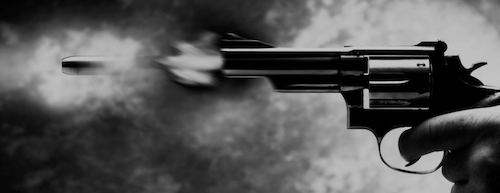
From surveillance cameras to smartphones, today’s crimes are increasingly being captured on video. But could showing slow-motion replays of crimes in court be producing harsher verdicts?
This is the suggestion from a new study published in PNAS by researchers at the University of Chicago, University of San Francisco, and University of Virginia. They argue that slow motion replays can give viewers “the false impression that the actor had more time to premeditate before acting.”
Participants were shown surveillance footage of either an attempted robbery in which the assailant shot the store worker, or an NFL player performing a banned tackle. Participants, who were recruited online using Amazon’s Mechanical Turk crowdsourcing program, were shown the videos both at regular speed and in slow motion.
RELATED: How Police Body Cameras Change Our Perception Of Right And Wrong
In the first study, participants acted as jurors and were randomly assigned to watch footage of the attempted robbery and shooting either at regular speed, or in slow motion. They were then asked to assess whether the assailant shot with the intention to kill, how far it was premeditated, and how much time it seemed he had to assess the situation before firing his weapon.
Watching the slow motion footage “quadrupled the odds that jurors would begin the deliberation phase ready to convict,” the researchers write. Those who watched the clip at this speed were more likely to conclude that there was a wilful intention to kill.
Participants in the second study watched footage of an NFL player performing a banned helmet-to-helmet tackle. Again, participants who saw the footage in slow motion were more likely to feel that the player had more intention of striking his opponent’s helmet.
Further experiments found that showing the elapsed time on the screen had no significant effect on participants’ perception of intention, and groups who were shown both the regular and slower versions of the footage in the first study were still more likely to come to a verdict of first degree murder than those who just watched the clip at normal speed.
“In legal proceedings, these judgments of intent can mean the difference between life and death,” the authors write. They reference the case of John Lewis, who was convicted of the murder of a police officer in Philadelphia in 2007. His defense team appealed on the basis that the slow-motion surveillance video shown to the jury created a false impression of premeditation, but the appeal was dismissed and Lewis remains on death row.
“Any benefits of video replay should be weighed against its potentially biasing effects,” the researchers add. (Quartz has reached out to the study’s authors for comment.)
That participants were recruited using Mechanical Turk does present some limitations. This online crowdsourcing method has received criticism that participants are not representative of any one population, and their identities can’t be verified.
Source: qz.com
